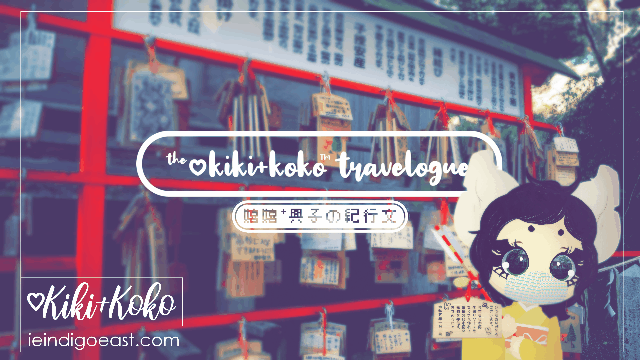
HELLO!I AM QUIZBO™!And, this is the fifth instalment of Kiki+Koko: Let’s NihonGO!! Online’s Japanese Word of the Weekday! During the month of January, we are encouraging students and visitors to challenge themselves by revising/studying every weekday in order to acclimate to learning a language. However, if you are one of the many who will discover this after the month of January, do not let this discourage you in any way. You can challenge yourself any month of any year. It is not a requirement that it fit within the confines of a normal month. Even if it is the middle of July, there is no reason to defer your dreams. If you have always wanted to learn Japanese language, then take the opportunity any day. If you do not complete a month, that is also all right. Go at your own pace and measure what works best for you.
Even if you are attending a class for Japanese language study, class is truly for instruction; and though there are many tips and tricks that Kiki+Koko have for getting the most out of an in-person or online class with an instructor, for now, I will mention simply that being instructed will not automatically cause you to memorise the concepts. It is important to take initiative, and it is obvious that you most likely have this initiative by visiting this website. Though there are universal codecs amongst humans in relation to learning, you are the only one who truly understands what helps concepts click in your own mind. That is the main purpose of this challenge!
Keep track of what helps you memorise and understand the concepts presented in order to use them. And, if you are quite serious about learning Japanese language, it is recommended that you begin learning to write in hiragana. We have many lessons to help you learn at your own pace, and this can be very useful in engaging your senses, connecting more concepts, and creating more long term language memories.
In order to get the most out of this challenge as well as any of our other lessons that include audio or otherwise, it is recommended that you engage your senses by:
- Listening to the pronunciation and repeating it aloud
- Writing the word or phrase using the correct stroke order
- Creating your own sentences through writing or aloud
Word(s) of the Weekday:
自習【じしゅう】
jishuu
Noun (名詞)、suru verb (「名詞+する」の動詞)、Transitive Verb(他動詞)
- Self-study; teaching oneself
- Also, (in-school) self-study whilst a teacher is absent
JLPT N2 |common word (常用語)
Thank you for your patience during this quick advertisement break.
Our lesson will continue shortly.
Thank you for your patience during that quick advertisement break.
Let us practice today’s vocabulary by hearing and using them in a sentence. For this part of the corner, we recommend using this as a way to connect the vocabulary to more concepts. If you are a beginner, we recommend to make a simple sentence, saying it aloud and/or writing it down in order to create more mental connections.
If you are further in your Japanese language learning journey, it is also recommend to do the same: create a sentence or even a short story, but perhaps try to incorporate more vocabulary words or recent grammatical concepts that you have learnt.
For example, if you just read Basic Japanese Question Words | 基本的な疑問詞 | PART 1 , PART 2, PART 3 Or any others in the Essentials series, you could try to create some questions using todays vocabulary. We will get you started with some example sentences of our own.
Let us NihonGO!!
Note: Each of these sentences is written with a basic level of politeness making the grammar usable in most settings.
Example #1:
どの学習のリソースで日本語の自習をするつもりですか?
どのがくしゅうの りそーすで にほんごの じしゅうを する つもり ですか?
dono gakushuu no risoosu de nihongo no jishuu wo suru tsumori desuka?
Which learning resource do you plan to use for (your) Japanese self-study?
Example #2:
Kiki+Koko: Let’s NihonGO!!オンラインと努力によって日本語の自習をするつもりです。
Kiki+Koko: Let’s NihonGO!!おんらいんと どりょくに よって にほんごの じしゅうを するつもりです。
Kiki+Koko: Let’s NihonGO!! Onrain to doryoku ni yotte nihongo no jishuu wo suru tsumori desu.
I plan to study Japanese language by myself using Kiki+Koko: Let’s NihonGO!! Online and diligence.
Example #3:
クラスをもっと分かりやすい形にするため、学期が始まった前、彼女は平仮名の読み方と書き方を自習しておきました。
くらすをもっと わかりやすいかたちにするため、がっきが はじまったまえ、かのじょは ひらがなの よみかたと かきかたを じしゅうしておきました。
kurasu wo motto wakari yasui katachi ni suru tame, gakki ga hajimatta mae, kanojo wa hiragana no yomikata to kakikata wo jishuu shiteokimashita.
She studied how to read and write in hiragana by herself before the semester began in order to make the class easier to understand.
Example #4:
教師は生徒に新しい情報を提示するのに、生徒は課程を十分理解するため、自習もしなければなりません。
きょうしは せいとに あたらしい じょうほうを ていじするのに、 せいとは かていを じゅうぶん りかいするため、じしゅうも しなければなりません。
kyoushi wa seito ni atarashii jouhou wo teiji suru no ni, seito wa katei wo juubun rikai suru tame, jishuu mo shinakereba narimasen.
Teachers present new information to students, but students must also study on their own to fully understand the curriculum.
Even though that is all that we have time for in today’s instalment of Kiki+Koko: Let’s NihonGO!! Online’s Japanese Word of the Weekday, there are many useful learning opportunities that stem from the last example sentence. Perhaps as a beginner you learnt the words for teacher and student in Japanese, but there is a chance that many beginners may not know that there is more than one word for teachers and students!You can read 🔊Japanese Word(s) of the Week w/ QUIZBO™ | 【教師】+BONUS:【生徒】(+Helpful Hints with Kiki+Koko: Difference between 「先生」& 「教師」) to learn more ways to say teacher and student as well as what the difference between these two words for teacher.
---- -・-- ・--・ -・-・ ・- ・・・ ---・- ・・ ・-・-・ -・・・ ・・ ---- --・-・ ・・ ・--- -・--- ---・- ・・
 You can also have a look at previous Word of the Week articles for even more Japanese vocabulary. You can be sure that you are caught up with the latest by visiting ieindigoeast.com, and clicking the sidebar link labelled 今週の単語 | Word of the Week, or go to ieindigoeast.com/kikiandkokoletsnihongo and scroll down until you see a computer robot on the Word of the Week banner, and you can access the archives. (That’s me!)
You can also have a look at previous Word of the Week articles for even more Japanese vocabulary. You can be sure that you are caught up with the latest by visiting ieindigoeast.com, and clicking the sidebar link labelled 今週の単語 | Word of the Week, or go to ieindigoeast.com/kikiandkokoletsnihongo and scroll down until you see a computer robot on the Word of the Week banner, and you can access the archives. (That’s me!)
・-・・・ -・・-・ ・- -・ -・ ・-・・ ・・ -・-・・ ・・-・ -・-・ ・・-・
Be sure to subscribe to our Electronic Mailing List of Tomorrow, today, using the form at the bottom of the web page so you can be the first to see the latest from Kiki+Koko: Let’s NihonGO!!, Indigo East, and SpeRaToBo. And, remember to return back to previous articles and lessons to review/revise. Also consider following our new page on Twitter and Instagram to support the spread of this site in a friendly domination of Earth that will help more people. Or, if you are enjoying the content that we are creating, or want to spread this content to more people to be able to access it for free, you can join our patreon, patreon.com/ieindigoeast or you can leave a TIP in the TIP♡JAR to keep it going with no strings attached. If you cannot support in this way, then we are just super happy that you are here anyway! It supports the content when you participate, and it is appreciated!
Thank you so much for learning with us!
♡QUIZBO™






Follow SpeRaToBo || ieindigoeast on WordPress.com
Categories: スペシャル | Specials!, SpeRaToBo, 一月の毎平日の単語|Word of the Weekday





























